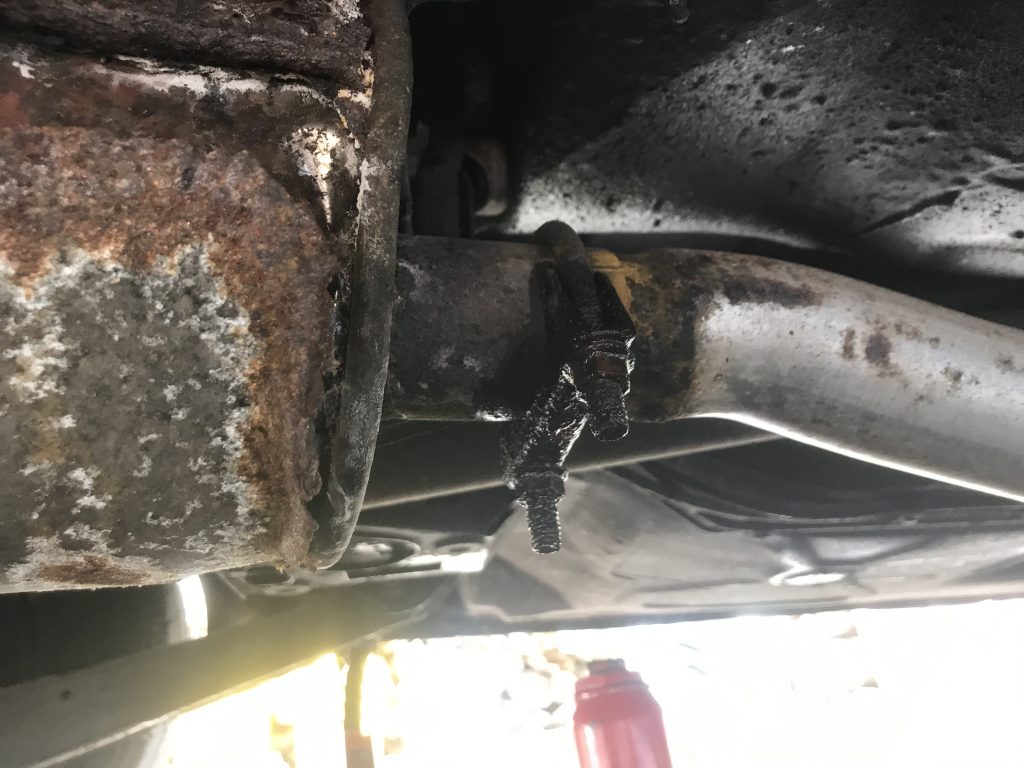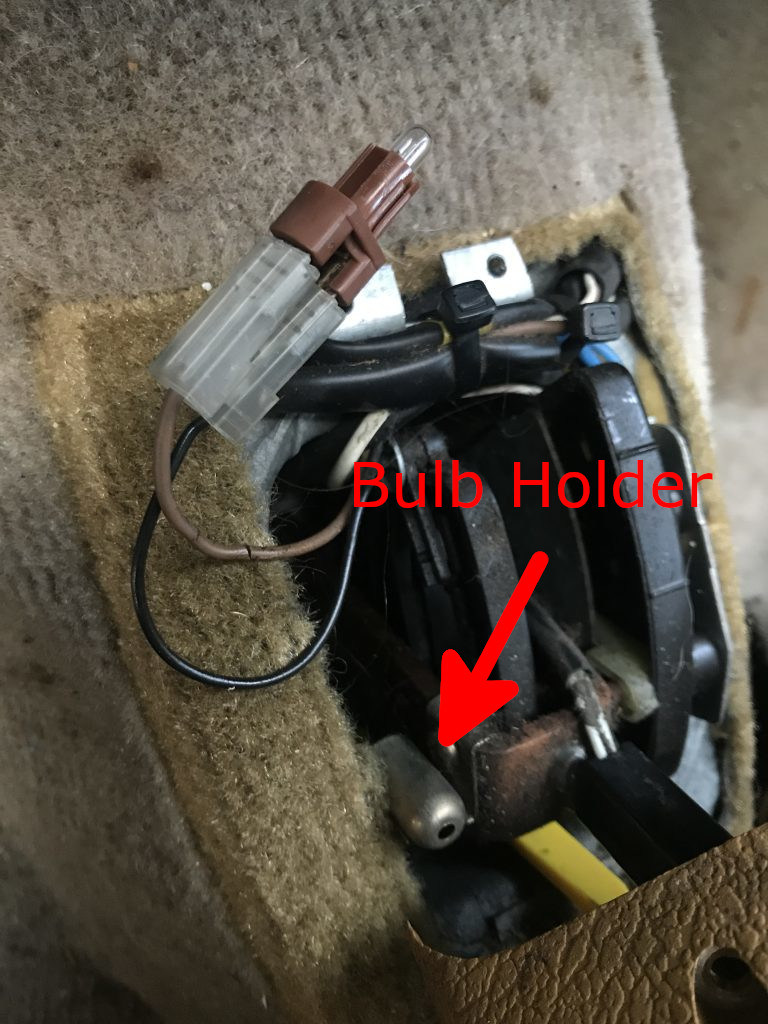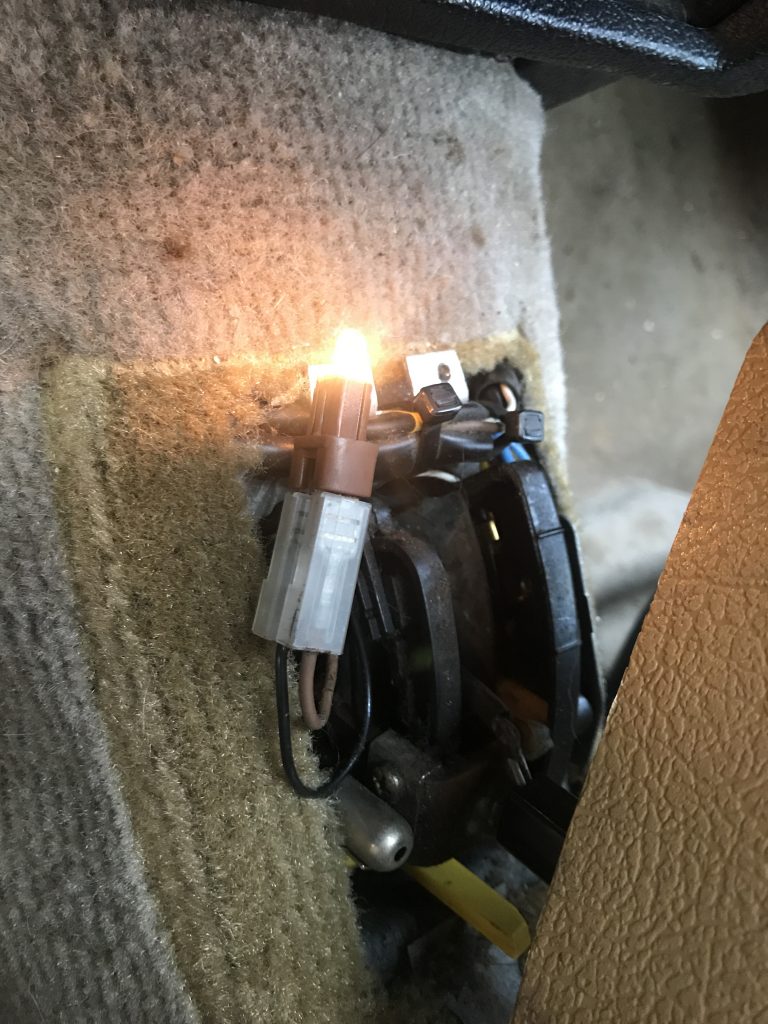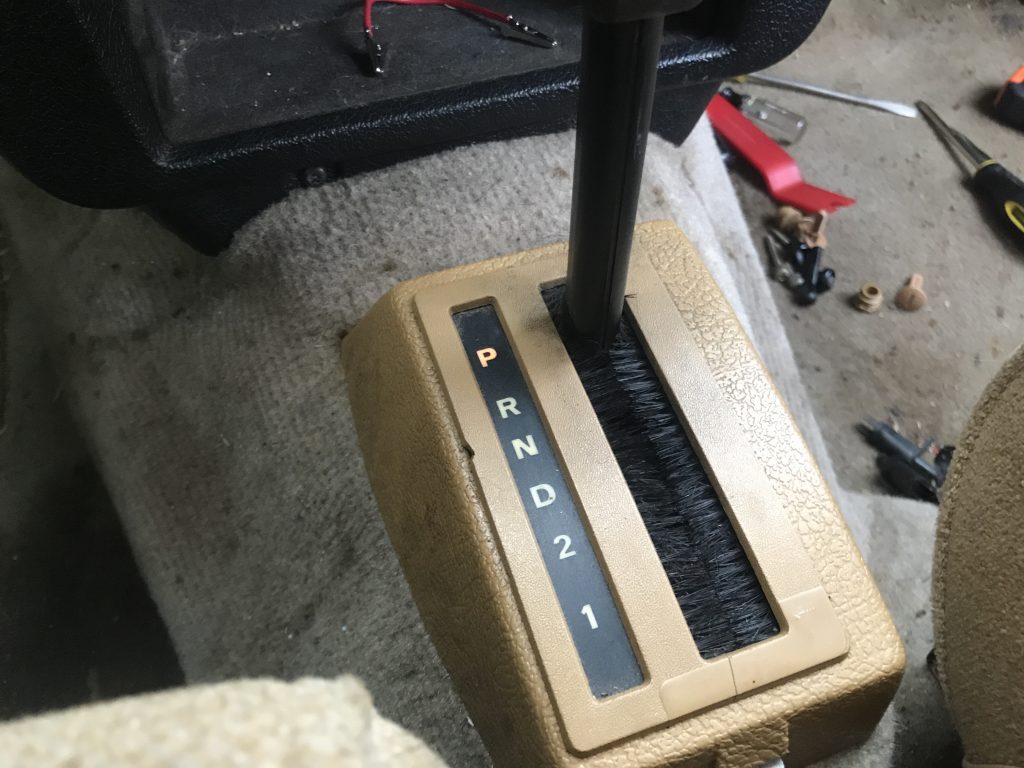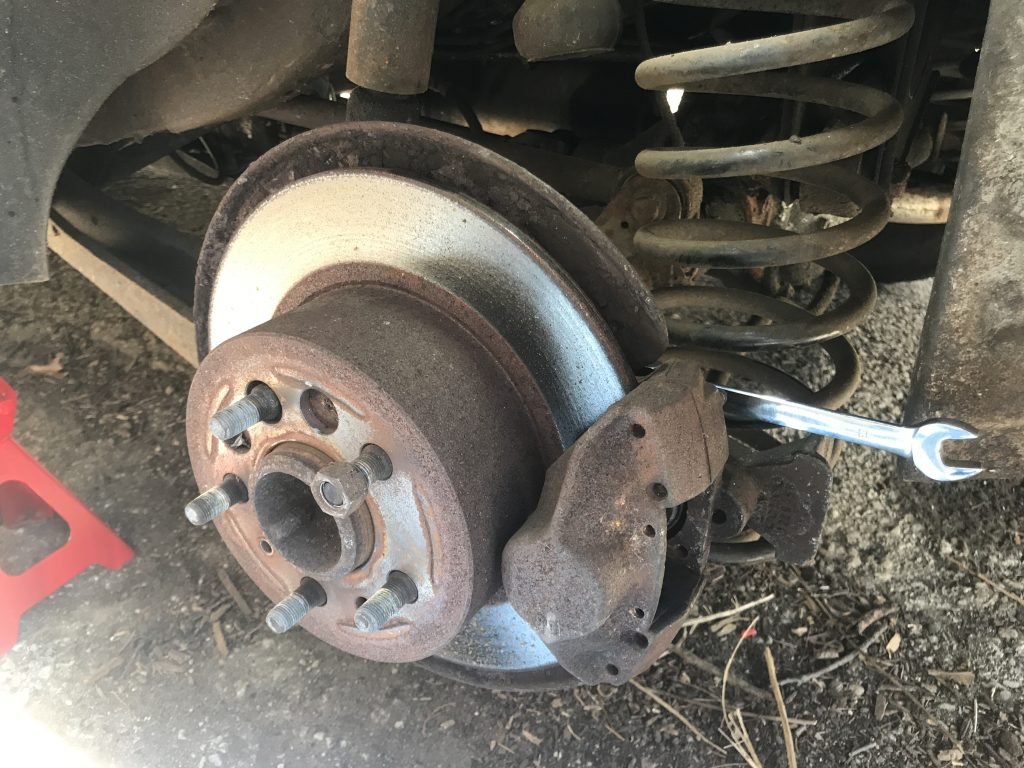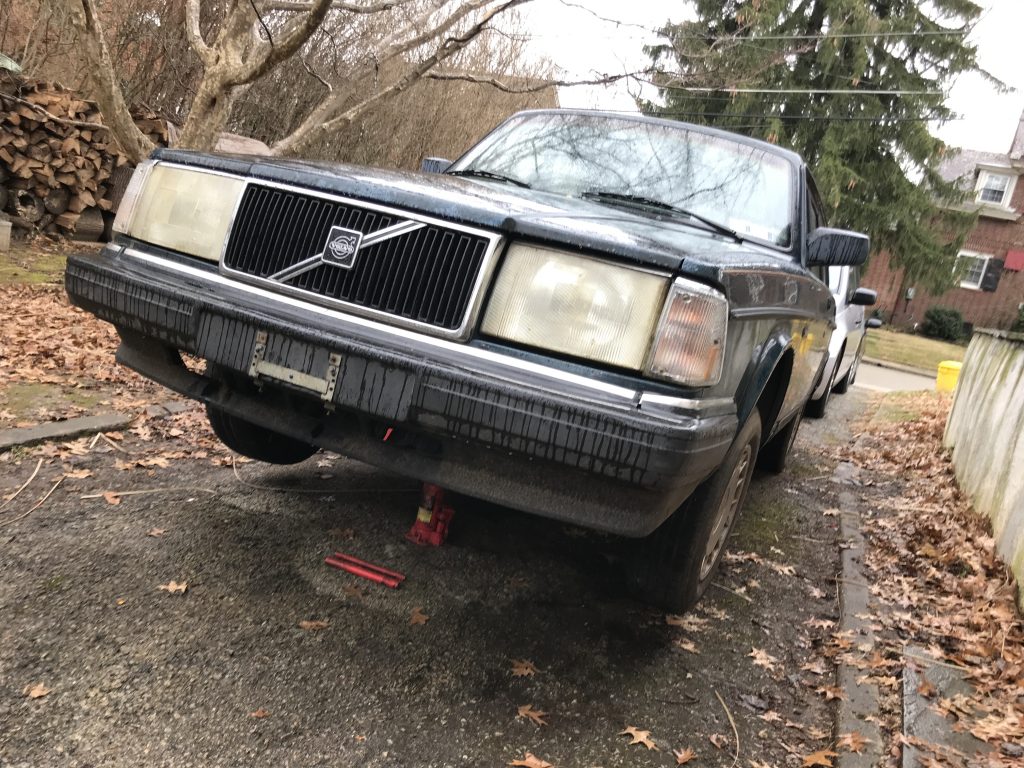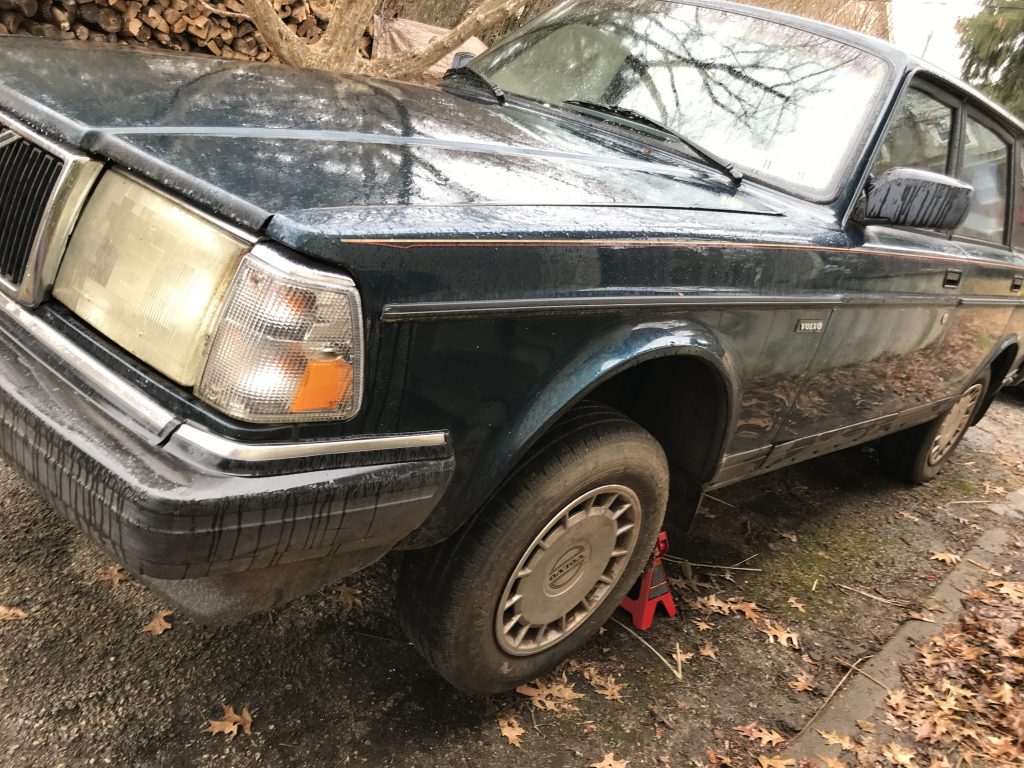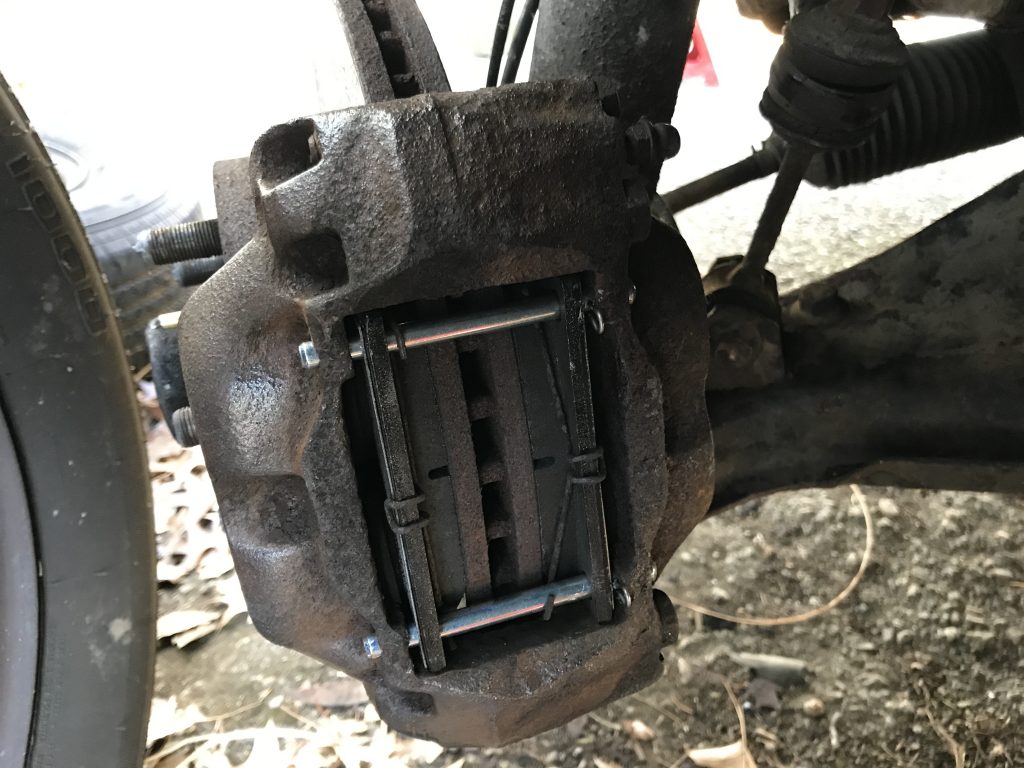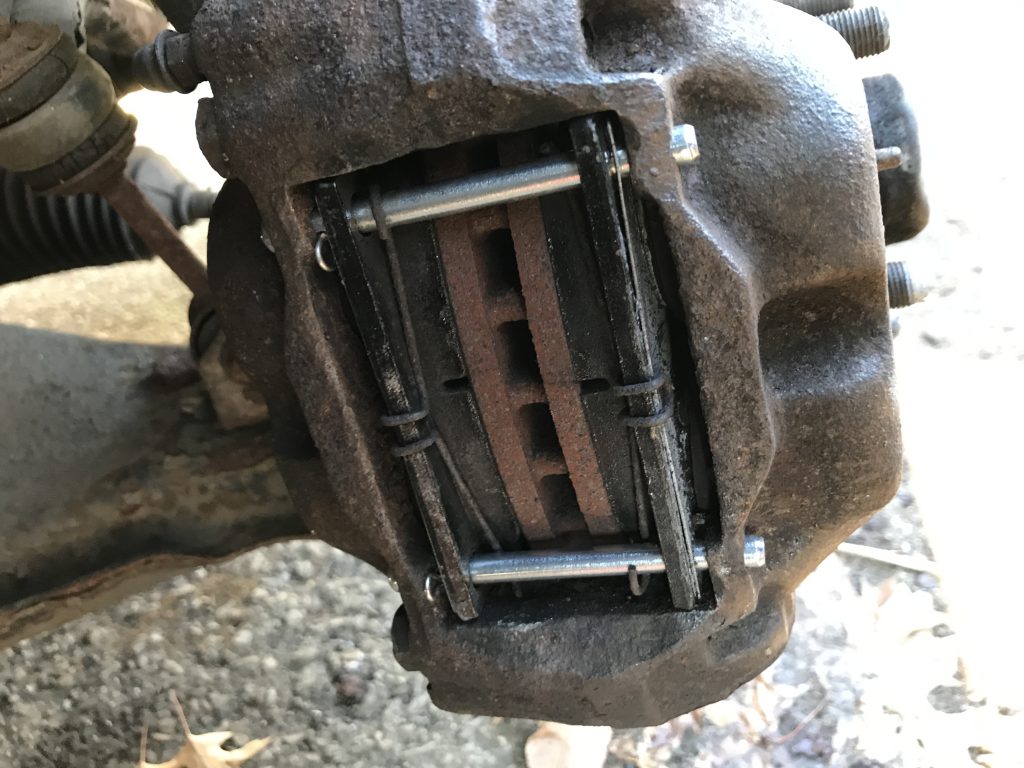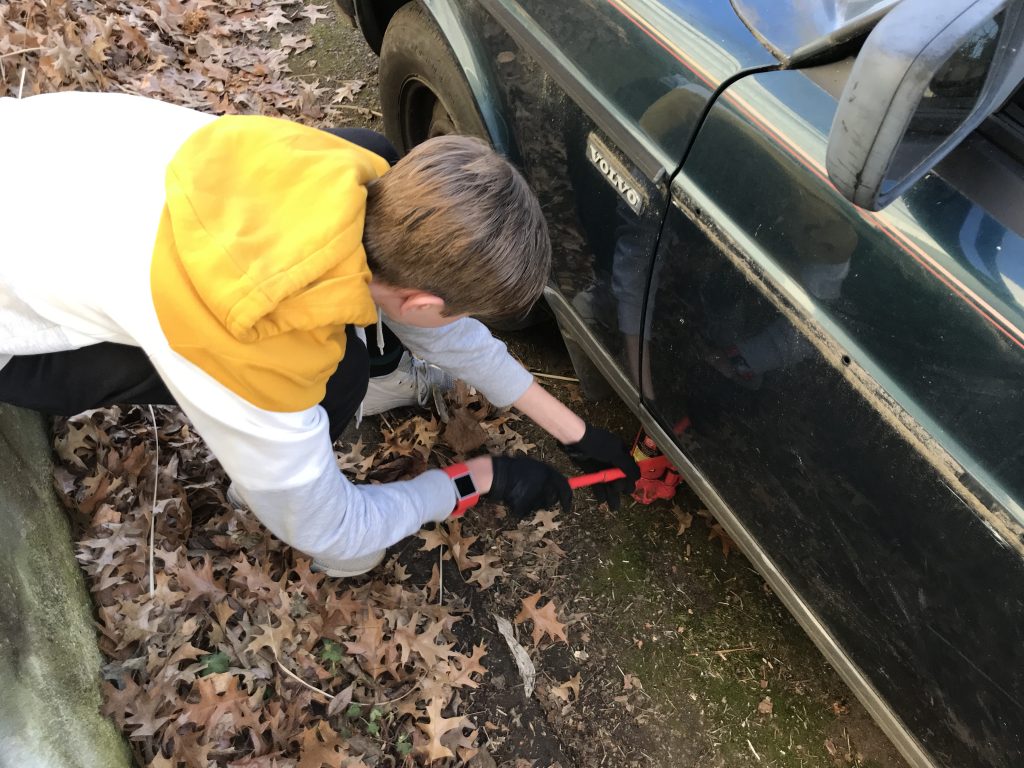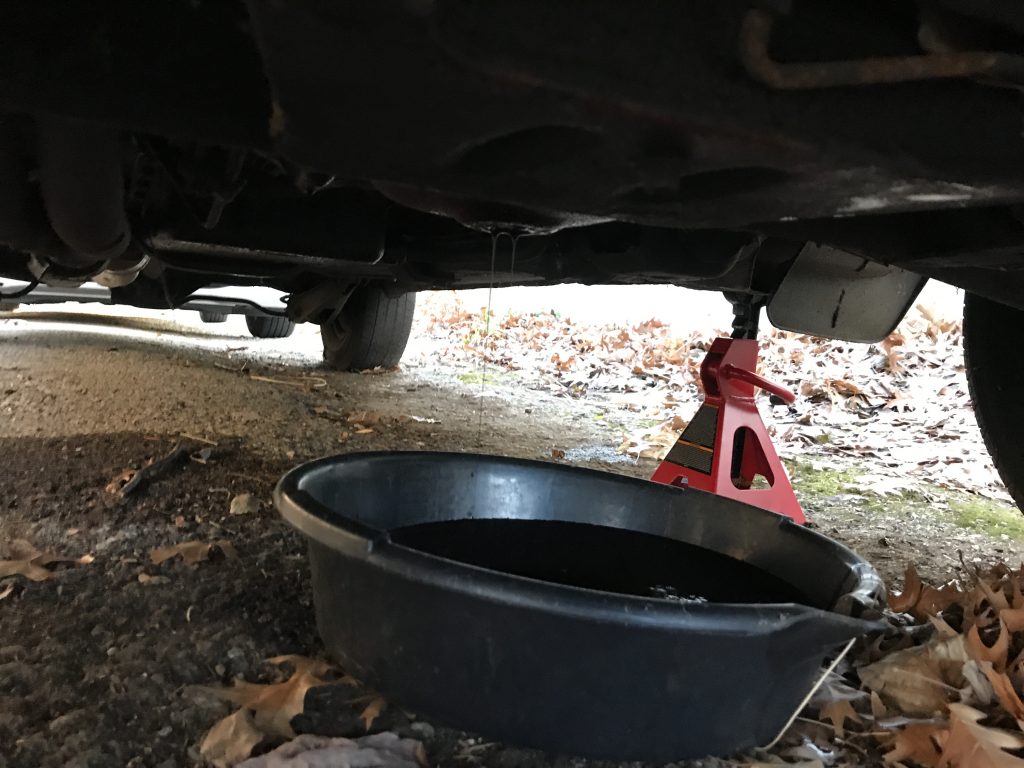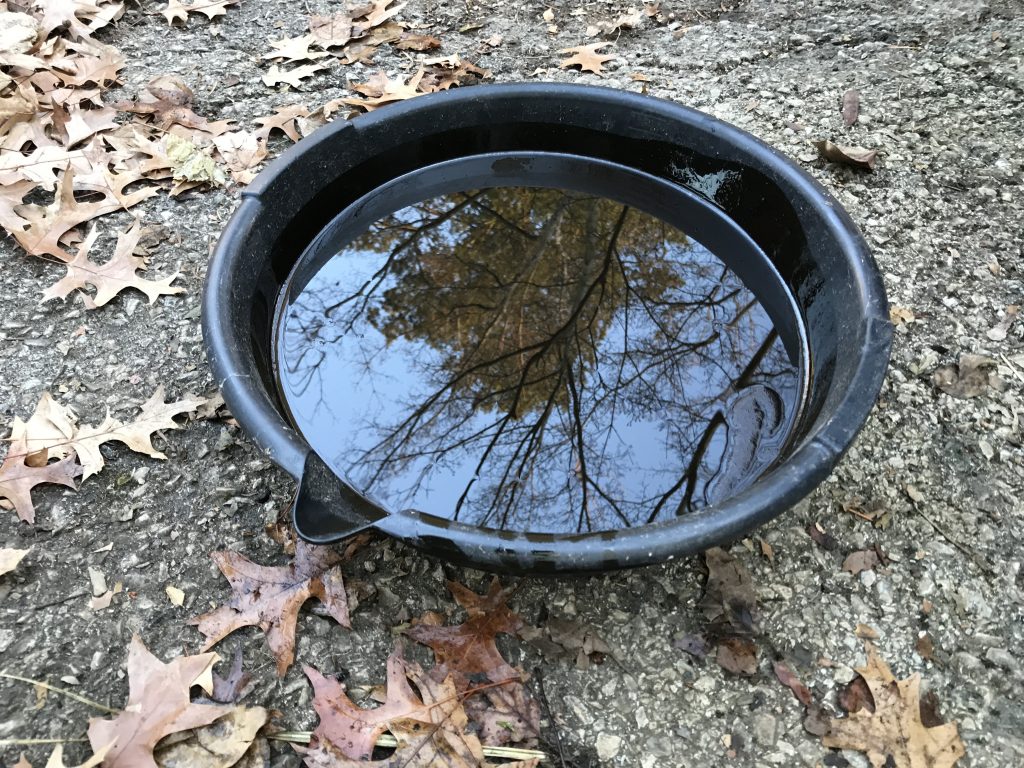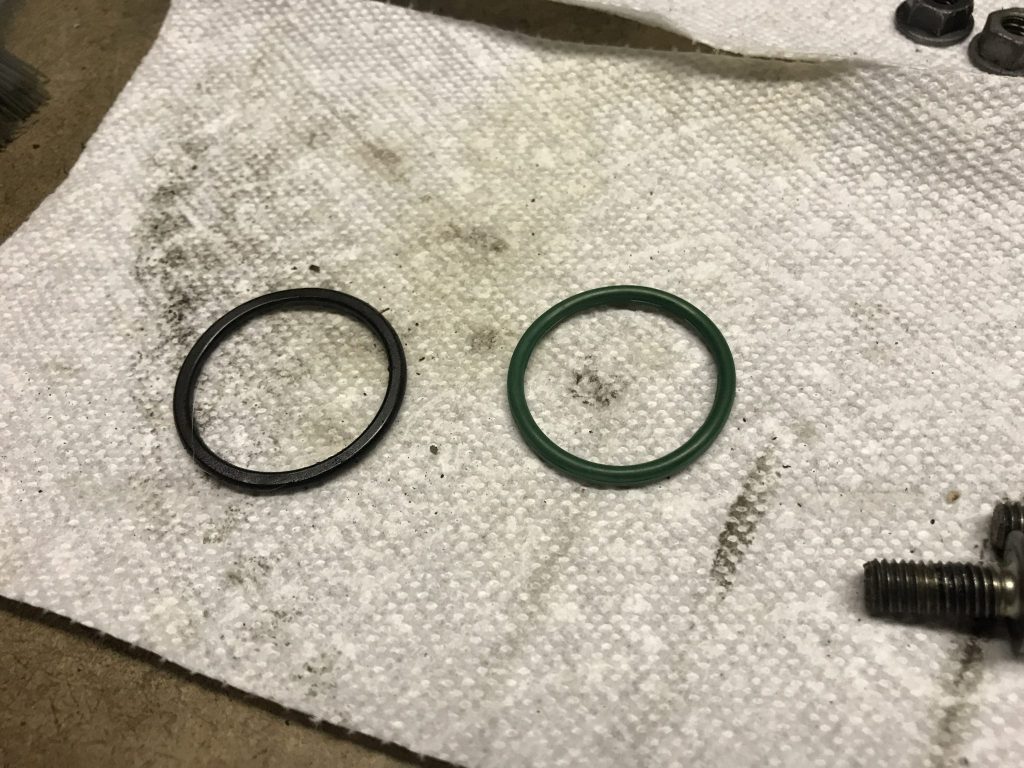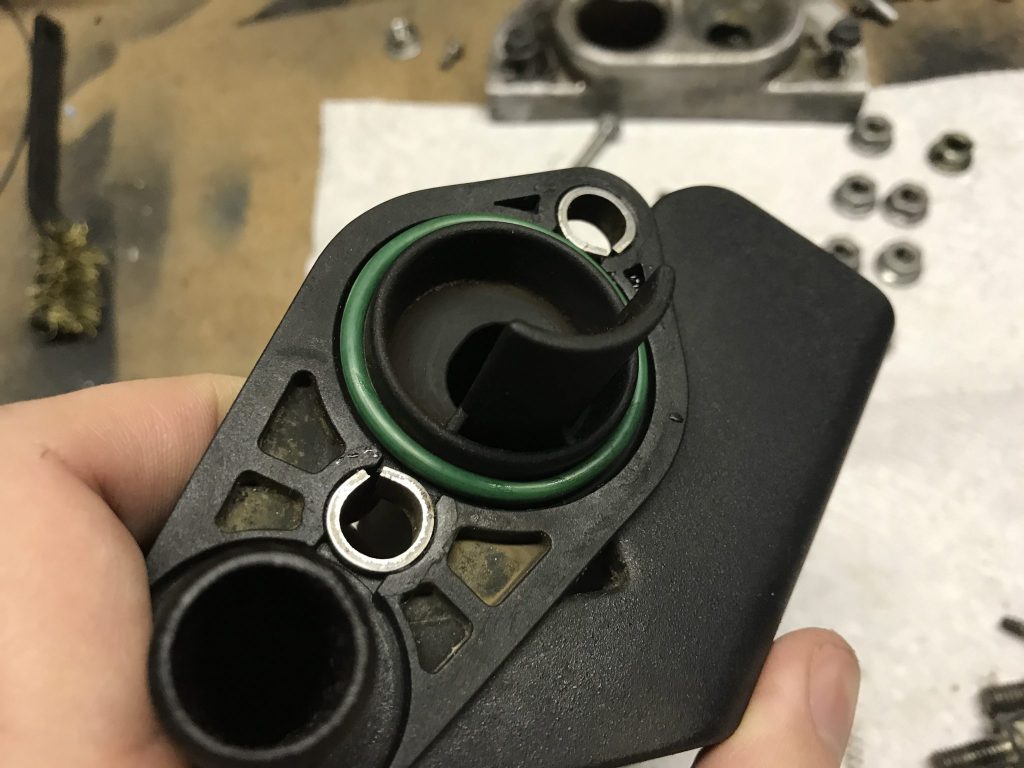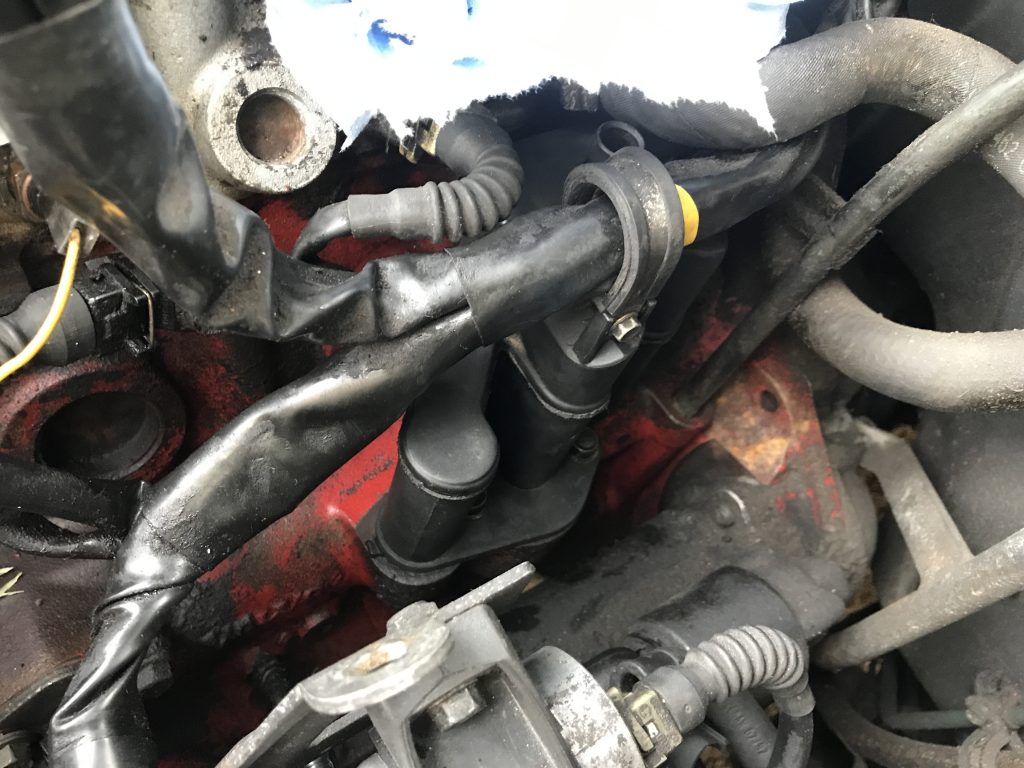After a few weeks of waiting there was finally an alignment of decent weather and the weekend. That meant as soon as a got done with a few household chores I was able to start the process of taking out the old exhaust and putting in the new one. This system includes the resonator, a muffler, and the various pipes that connect them.
First a quick note of resonators vs mufflers. They are similar to each other in that they are responsible for mitigating exhaust noise. The main difference is that the resonator does not quiet the exhaust sound. Rather it “tunes” the exhaust sound in a way that makes the muffler’s job easier. That way the muffler can be designed to muffle a much narrower set of frequencies which means a quieter ride with less of a hit on performance.
Removal
The whole process starts by jacking up the rear of the car onto jack stands. Next I had to remove the clamp that connects the resonator to the catalytic converter pipe. This clamp was hideously rusted and was almost just a clamp shaped lump of corrosion. I blasted it with WD-40 and used a breaker bar with a 14mm deep socket to get the nut turning. It took some muscle, and boy did that nut scream as it turned, but eventually I got both sides off far enough to be able to move it out of the way. I then got out the rotary tool and used a cut off disc to finish it off. I wasn’t going to reuse them, so this was the much faster and easier method.
